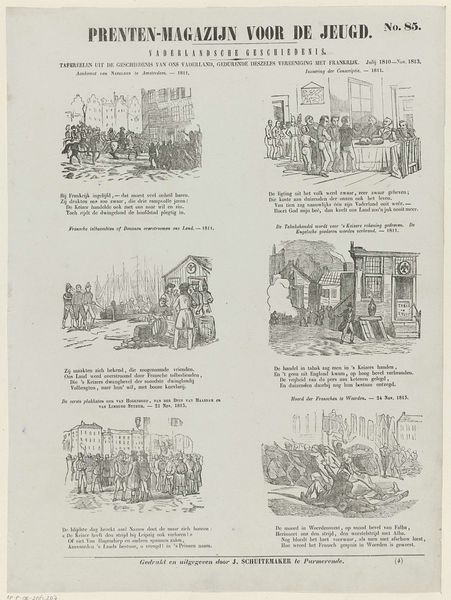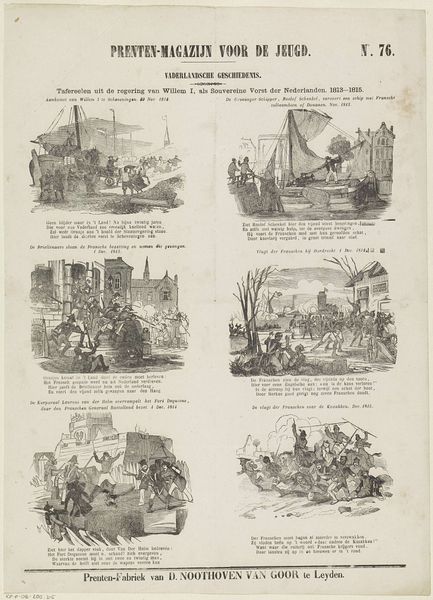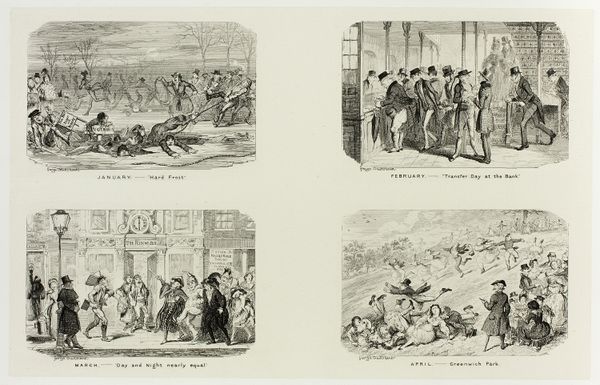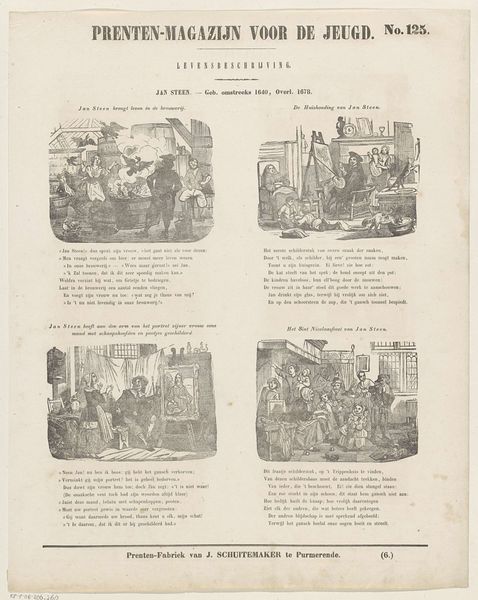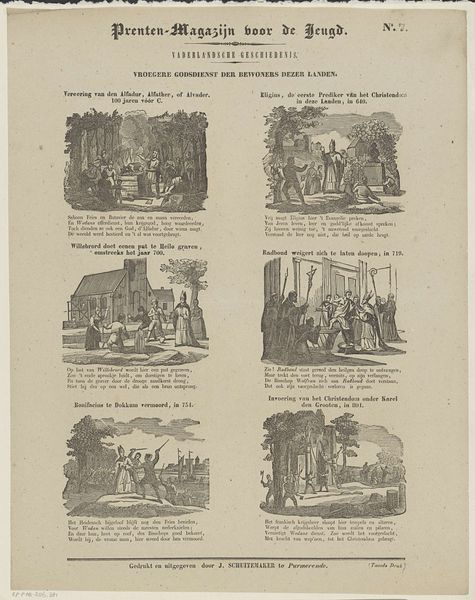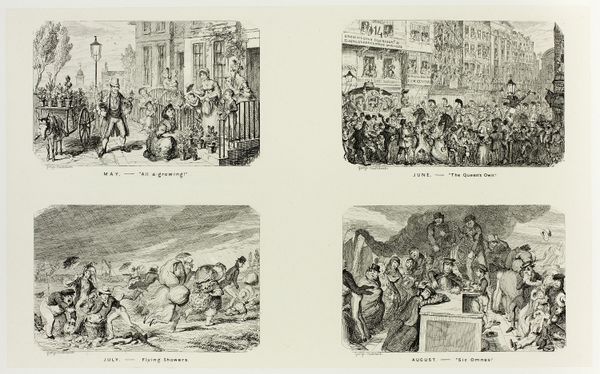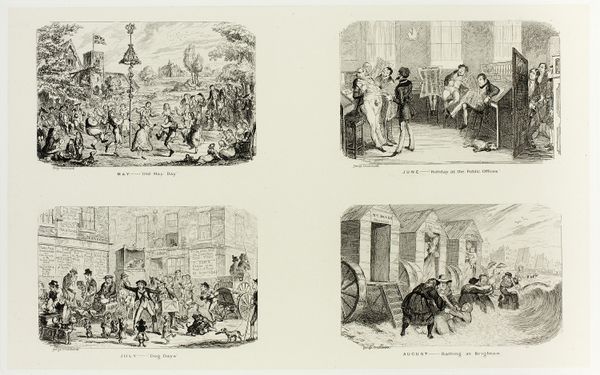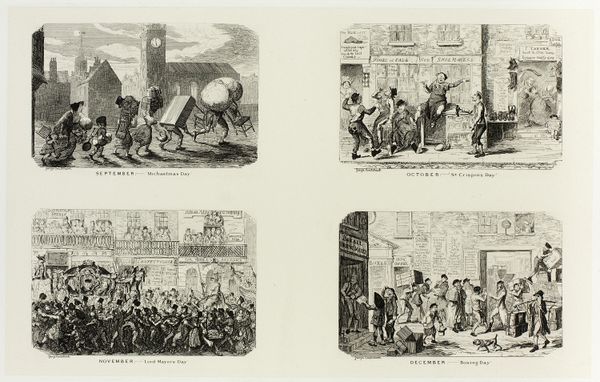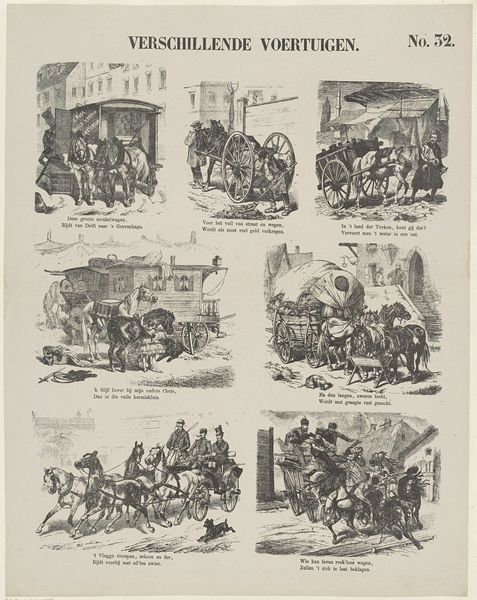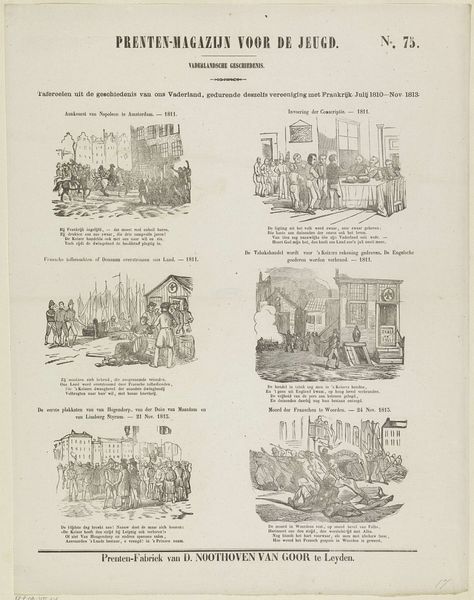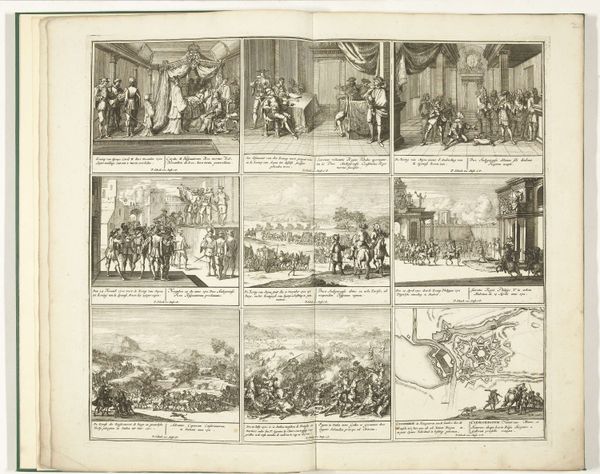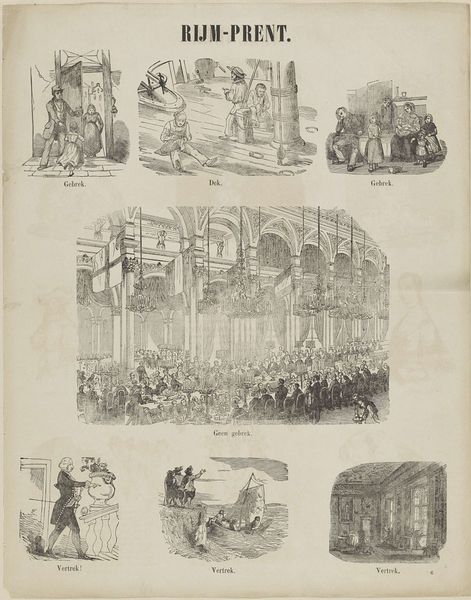
Dimensions: height 400 mm, width 333 mm
Copyright: Rijks Museum: Open Domain
Editor: This is "Verschillende voorstellingen," or "Different Representations," a drawing from circa 1828 to 1913, attributed to Erve Wijsmuller. It's currently at the Rijksmuseum. The piece reminds me of a page torn from a sketchbook, a compilation of snapshots rather than a single narrative. How do you interpret the varied compositions on the page? Curator: What immediately strikes me is the compositional strategy, a grid-like arrangement of distinct scenes. This disrupts the conventional pictorial unity, foregrounding instead the relationships between these disparate representations. Consider the tonal variations across each vignette—the sharp contrast in the ship scene versus the softer rendering of the palace, for example. Does this oscillation in technique provide any structural or emotional rhythm across the artwork? Editor: It creates a sort of dynamic imbalance, doesn't it? Like each scene is vying for attention, yet the page itself is a unifying constraint. Curator: Precisely. It’s a study in contrasts and their spatial relationships. The varying perspectives employed – from street-level engagement to a more distanced observation – challenge any fixed viewpoint. Do these shifts in perspective, along with the changes in visual density, create a kind of narrative logic, a structured progression despite the absence of an overt storyline? Editor: That's interesting... almost as if the progression isn't linear, but based on visual echoes and contrasts. Looking at it that way changes my understanding completely. Curator: Indeed, by deconstructing the idea of a singular, unified artwork, we can better appreciate the intrinsic qualities of line, form, and their orchestrated arrangements within the delimited space of the page. Editor: Thank you! I had not considered the relationship between each section as a single artistic whole.
Comments
No comments
Be the first to comment and join the conversation on the ultimate creative platform.

